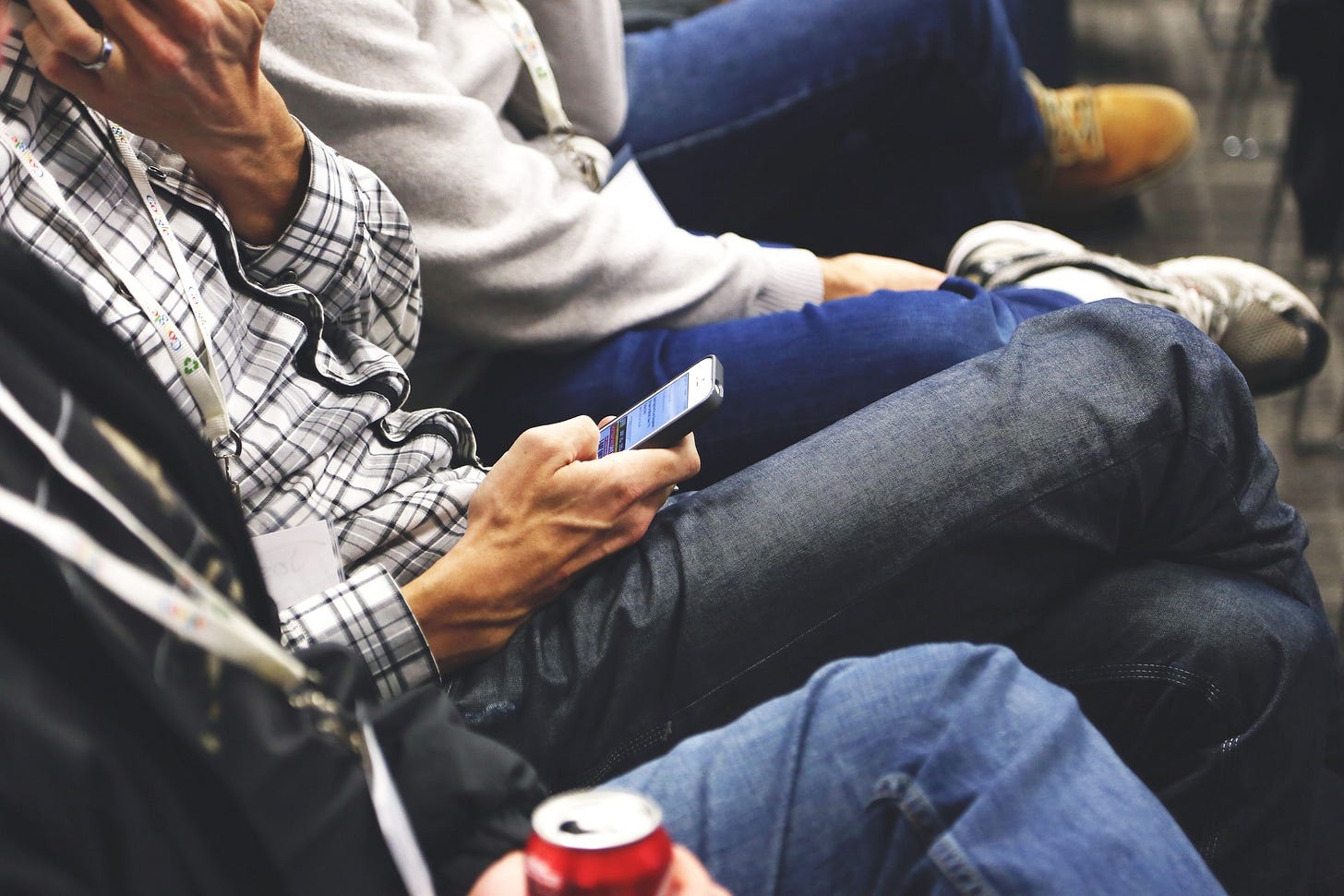Free User Research
Why pay thousands of dollars when you can just pay attention?
“Found time” is the name product developers give to all those little snippets of time where people are not actively engaged in a task. And now that it’s been discovered, they work very hard to find ways to take all that time.
It’s the 2 minutes you wait for your coffee after ordering. It’s the 30 seconds in front of the microwave after the last 30 seconds of waiting because the 7-11 burrito you nuked wasn’t hot enough. It’s the 2-10 minutes waiting in line at the pharmacy counter. It’s the 20 minutes sitting in the park as your kid plays in the playground. It’s the 3 minutes in your car waiting for the groceries to be loaded in the trunk. In short… it’s waiting.
Then came the smartphone, and app developers rejoiced that they could capitalize on all that new found time to put ads in front of our faces interspersed with games and social media. And we all delighted in the relief from the anxiety of standing around not doing something, of not being productive, of not being stimulated. We all feel the need to DO something, ALL the time.
So, here’s where I tell you to live in the moment, meditate, and avoid stimulation right?
No, actually, I’m going to tell you how to be MORE productive.
You see, playing games on your smartphone may be stimulating, but it’s not actually productive in that you gain nothing. Virtual points, stars, and hearts do not translate to knowledge, insights, or money. But paying attention can.
Next time you find yourself in line, take all that potential brain power that cries out to solve a crossword puzzle, and redirect it towards observing someone else around you. What are they doing? Why are they doing it? What are they struggling with? And most importantly, how are they different than you?
Paid user research is a critical part of the product innovation process. There are man types of research which can cost hundreds to thousands of dollars to set up, but they all try to get the answer to the same questions. What do people need in their daily lives? What do they struggle with? What do they actually do all the time? You can search for the same answers just by observing people around you (seems like there are people everywhere, not just at paid research facilities). By seeing how they interact with products and situations you can gain valuable insights that can inform future product ideas.
Some observation tips:
Pay attention to body language and nonverbal cues: People communicate not just through words, but also through their body language, facial expressions, and other nonverbal cues. Paying attention to these cues can help you understand how people feel about the product or task, and can provide important insights into their needs and preferences.
Take notes and record data: It's important to record your observations in a systematic and consistent way, so that you can analyze and interpret the data later on. Now that smartphone of yours can be useful!
Avoid bias: Don’t just assume people have the same needs and habits as you do. You’re looking to learn and gain insights, which requires assuming that people are NOT you. Try to remain objective and focus on the facts, rather than making assumptions or judgments based on your own opinions or beliefs.
Really want to get your zero dollars worth? Strike up a conversation. Most people are really friendly and LOVE to chat and share their opinions with anyone who will listen. Do them a favor, and gain some valuable user research from them. Here are some tricks to starting up a conversation with strangers:
Compliment them: Complimenting someone on something they are wearing or something you notice about them can be a good way to start a conversation. For example, "I love your shoes, where did you get them?" or "That's a really cool shirt, where did you buy it?"
Ask for their opinion: Asking someone for their opinion can be a good way to start a conversation, especially if you are in a setting where you are both experiencing the same thing. For example, "What do you think of this exhibit?" or "Have you tried this restaurant before? What do you recommend?"
Comment on the setting: Commenting on the environment or setting you are in can be a good way to start a conversation. For example, "This is a really cool coffee shop, have you been here before?" or "This is a really beautiful park, have you visited it often?"
Innovation is a skill that requires practice. A huge part of that skill is the ability to empathize and understand a user’s need. And that comes from observation. In our daily lives, we are blessed with many opportunities to practice this skill. Why not take advantage of it? And if you’re lucky, that great conversation you started could turn into a product breakthrough or gain you a lifelong friend.




